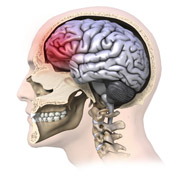Research and Innovation, UNL Office of

Center for Brain, Biology, and Behavior: Faculty Publications
Document Type
Article
Date of this Version
2014
Citation
Brain and Behavior 2014; 4(6): 915–924
Abstract
Background: Smokers show increased brain activation in reward processing regions in response to smoking-related cues, yet few studies have examined secondary rewards not associated with smoking (i.e., money). Inconsistencies exist in the studies that do examine secondary rewards with some studies showing increased brain activation in reward processing brain regions, while others show decreased activation or no difference in activation between smokers and nonsmokers. Aims: The goal of the current study is to see if smokers process the evaluation and delivery of equally salient real world rewards similarly or differently than nonsmokers. Methods: The current study employed functional magnetic resonance imaging (fMRI) to examine brain responses in smokers and nonsmokers during the evaluation and delivery of monetary gains and losses. Results: In comparison to nonsmokers, smokers showed increased activation in the ventromedial prefrontal cortex to the evaluation of anticipated monetary losses and the brain response. Moreover, smokers compared to nonsmokers showed decreased activation in the inferior frontal gyrus to the delivery of expected monetary gains. Brain activations to both the evaluation of anticipated monetary losses and the delivery of expected monetary gains correlated with increased self-reported smoking craving to relieve negative withdrawal symptoms and craving related to positive aspects of smoking, respectively. Discussion: Together these results indicate that smokers are hyperresponsive to the evaluation of anticipated punishment and hyporesponsive to the delivery of expected rewards. Although further research is needed, this hypersensitivity to punishments coupled with increased craving may negatively impact quit attempts as smokers anticipate the negative withdrawal symptoms associated with quitting.
Included in
Behavior and Behavior Mechanisms Commons, Nervous System Commons, Other Analytical, Diagnostic and Therapeutic Techniques and Equipment Commons, Other Neuroscience and Neurobiology Commons, Other Psychiatry and Psychology Commons, Rehabilitation and Therapy Commons, Sports Sciences Commons


Comments
© 2014 The Authors.
Open access
doi: 10.1002/brb3.285